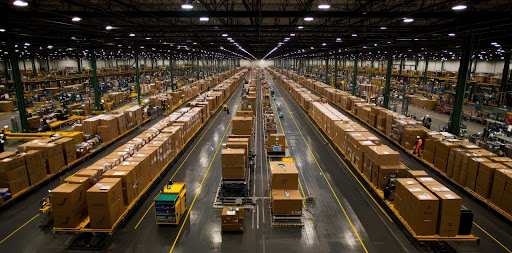Time to read: 6 min
Optically clear plastics like acrylic and polycarbonate are popular glass alternatives because they have excellent optical clarity (up to 92% visible light transmittance), and are lightweight, easy to machine, and cost-friendly.
This article discusses these two plastics and their general characteristics and applications — including the CNC machining requirements for acrylic and polycarbonate, and when it’s best to us either acrylic or polycarbonate for a given application.
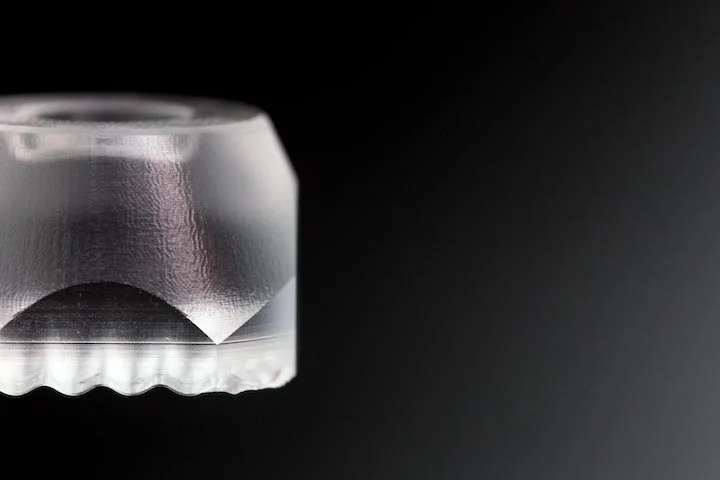
What Is Acrylic?
Acrylic, or PMMA (Polymethyl methacrylate), is a transparent thermoplastic often used as an alternative to glass, which is heavy and brittle and is not as UV resistant as acrylic. Acrylic’s optical clarity makes it an ideal choice for lenses, display cases, and aquariums.
Acrylic is produced in a cast form or an extruded form, with the cast form being preferred for machining due to its higher melting point and rigidity, despite its higher cost — its rigidity makes it more stable during machining, so it can meet tighter tolerances. Extruded acrylic is more flexible and is better suited for bending or shaping operations.
Acrylic is sold under various trade names, with Plexiglas® and Perspex® being the most popular cast brands of acrylic.
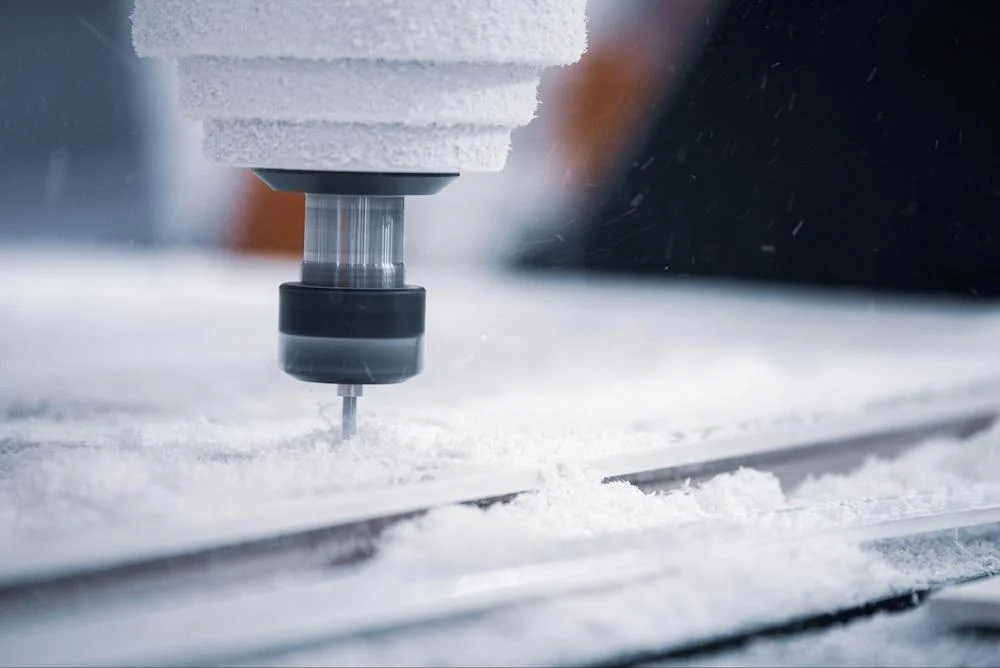
Characteristics of Acrylic
Listed below are some key characteristics of acrylic:
- Optical Clarity: Acrylic has excellent optical clarity, with a light transmittance as high as 92% for visible light, and 72% for UV light. The optical clarity of glass, by comparison, has a light transmittance between 80% and 90%.
- Chemically Resistant: Acrylic is resistant to a wide range of chemicals, including inorganic acids, fuels, oils, and aliphatic hydrocarbons. However, alcohol and organic solvents can damage acrylic parts, and make them cloudy, crack, or dissolve.
- UV Resistant: Not only does acrylic have reduced UV transmittance, but it’s also resistant to long-term UV radiation exposure. Unlike other clear plastics like PVC or unmodified polycarbonate, for example, acrylic does not turn yellow over time when exposed to UV light, rather, it retains its optical clarity.
- Lightweight: When compared to glass, acrylic is 50% lighter, so is an ideal glass alternative in weight-sensitive applications.
- Scratch Sensitive: Acrylic is not resistant to scratches and is easily damaged, so acrylic sheets are often coated with a scratch-resistant film. However, this is not practical if the parts are CNC machined.
- Poor Toughness: Acrylic is neither exceptionally tough nor impact-resistant. If toughness is required, then polycarbonate or another material is recommended.
What Is Polycarbonate?
Polycarbonate is a transparent, high-strength engineering thermoplastic that is often used in applications in which transparency and toughness are required. Unlike acrylic, polycarbonate can be exposed to high levels of deflection without cracking.
Polycarbonate is sold under various trade names such as Lexan® and Cyrolon®. CNC-machined polycarbonate parts, such as eyeglass lenses and diagnostic lab equipment, are used for various applications that rely on their clarity and toughness. If you have glasses, the lenses are likely made of polycarbonate instead of ‘glass,’ and have been since the 1980s.
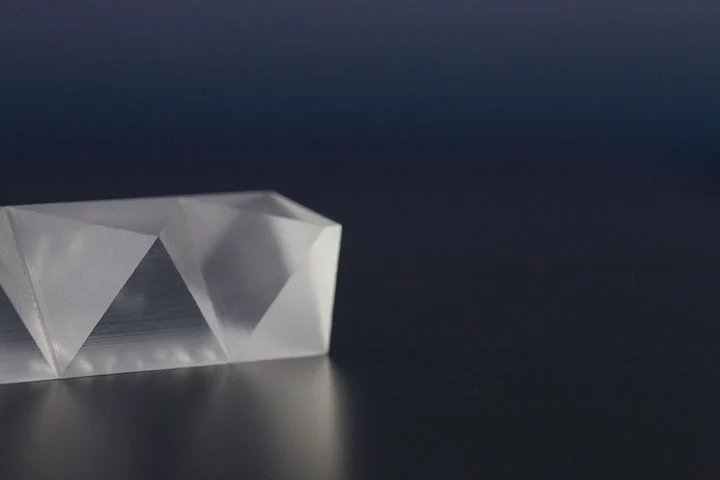
Characteristics of Polycarbonate
Polycarbonate stands out due to its toughness, machinability, and thermal resistance. However, it’s affected by UV radiation and has poor scratch resistance. Listed below are some key characteristics of polycarbonate:
- Optically Clear: Polycarbonate has a light transmittance of up to 90%, which is slightly lower than acrylic at 92%, but is still slightly better than glass. Polycarbonate is also able to block UV radiation.
- High Toughness: Polycarbonate is a tough material that is highly resistant to shock loads and can absorb impact without shattering. Polycarbonate is used in bulletproof windows because of its toughness.
- Flame Resistant: Polycarbonate is resistant to flame and will not ignite when exposed to an open flame, plus the material is self-extinguishing — polycarbonate won’t ignite with flame exposure and stops burning when the flame is removed. Specifically, polycarbonate has a flammability rating of B1, which means it has “low” flammability.
- Contains BPA(s): Some grades of polycarbonate cannot be used for food containers as they contain BPA (Bisphenol A), and heating polycarbonate accelerates the release of BPAs. This chemical has been linked with many adverse health effects like cancer and reproductive harm, but BPA-free variants of polycarbonate are available (such as Tritan).
- Poor UV Resistance: Polycarbonate is not resistant to UV radiation, so over time, the plastic will yellow and its surface will become damaged as it is broken down by UV radiation. UV stabilizer additives can be added to polycarbonate to prevent yellowing and embrittlement from UV exposure.
- Poor Scratch Resistance: Despite being a tough plastic, polycarbonate has worse scratch resistance than acrylic. As such, it often needs to be coated with a scratch-resistant coating, such as silicon dioxide or titanium dioxide — which is challenging for geometrically complex parts, as the vacuum deposition process is complex.
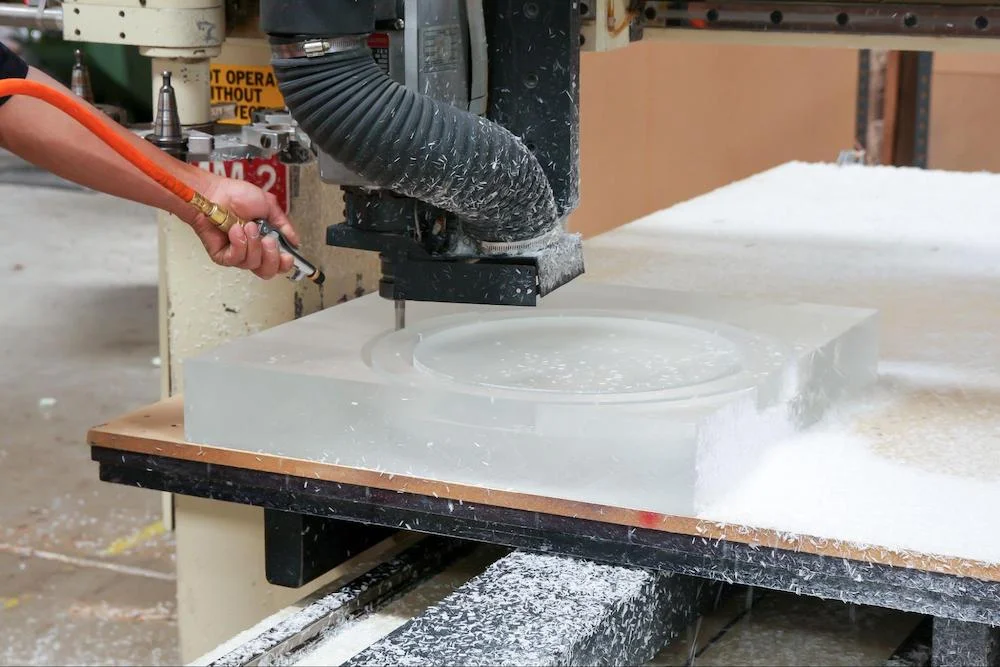
Comparison Table of Acrylic vs. Polycarbonate
| Property | Acrylic | Polycarbonate |
| Density | Approx. 0.42 lb/in3 | Approx. 0.045 lb/in3 |
| Light Transmittance (Optical Clarity) | 92% for visible light and 72% for UV light | Up to 90% for visible light but as low as 0% for UV light |
| Chemical Resistance (Alcohols) | No | Can be susceptible to attack with long-term exposure |
| Chemical Resistance (Hydrocarbons) | Yes | Can be susceptible to attack by some hydrocarbons |
| UV Resistance (Not Susceptible to Yellowing) | No | Yes |
| Scratch Resistant | Yes | Only with special coatings |
| Greatest Toughness | No | Yes |
| BPA-Free | Yes (Coatings may contain BPA) | No (BPA-free compositions do exist) |
Machining Acrylic vs. Polycarbonate
Tooling
When machining acrylic and polycarbonate, it’s important to use sharp cutting bits to limit friction between the tool and the part. Blunt tools will cause the plastic to melt due to heat build-up from the rubbing action and cause smearing.
Carbide tools are often preferred for thermoplastics, but polycrystalline diamond (PCD) cutters achieve the best results. Up-spiral end mills with one or two flutes are often the best tool for milling acrylic and polycarbonate, as the tool has a high material removal rate, is very sharp, and doesn’t leave burrs on the machined part. Multi-flute tools can result in chips packing into holes and slots and fusing the material to the cutting tool. For drilling operations, a sharp drill angle of 135 degrees is preferred.
Fixturing
Both polycarbonate and acrylic will warp if fixtures are over-tightened because it causes the parts to bulge during machining. The material will spring back once removed from the machine, resulting in out-of-tolerance features. However, vacuum tables can hold the material in place when mechanical fixturing is not ideal. Alternatively, double-sided tape can also secure thinner sheets to the machine bed, although the adhesive residue can be difficult to remove.
Speeds & Feeds
The exact speeds and feeds for machining polycarbonate and acrylic depend on many factors, including the machine type, part type, and fixturing. However, acrylic and polycarbonate must be cut at a high spindle speed (up to 18,000 RPM), and high feed rates are also preferred, as a slow feed rate can melt the material.
Polycarbonate has a higher melting temperature than acrylic, so it is not as prone to melting at lower speeds and feeds, and in some cases, slower feed rates are preferred for polycarbonate. Acrylic tends to chip more easily, whereas polycarbonate is tougher and does not chip as easily.
Coolant
In most cases, compressed air is sufficient for cooling acrylic and polycarbonate parts during machining. However, this depends heavily on speeds, feeds, and the type of cutting operations. If flood or mist cooling is required, utilize water-based coolant because coolants that contain organic solvents can damage the part, especially acrylic.
Choosing Between Acrylic vs. Polycarbonate CNC Machining
Deciding between acrylic vs. polycarbonate CNC machining for a machined component is challenging as it depends on several factors. For example, applications that require increased toughness, higher thermal resistance, and good optical clarity are better suited with polycarbonate.
Acrylic has slightly better optical clarity and should be used in applications where clarity is the primary design factor. Both materials are easy to machine, provided speeds and feeds are relatively high. In some cases, post-machining polishing operations may be required for either material, especially if optical clarity is desired.
Pro-Tip: Check out our Guide to Plastic Materials for Prototyping and Production for more tips on what plastic to choose for your next part.
Fictiv has the global manufacturing network and production experts you need to get quality acrylic and polycarbonate parts. As your operating system for custom manufacturing, Fictiv has the skills and know-how to support you from part design through prototyping and production.
Create your free Fictiv account and request a CNC machining quote today — we machine complex parts at ridiculous speeds!









